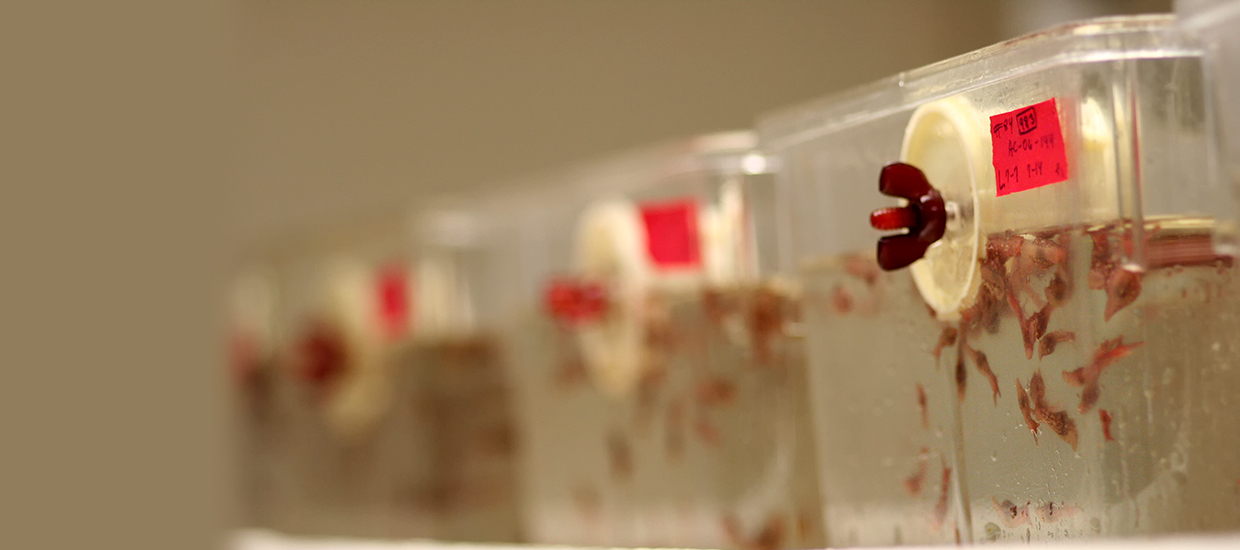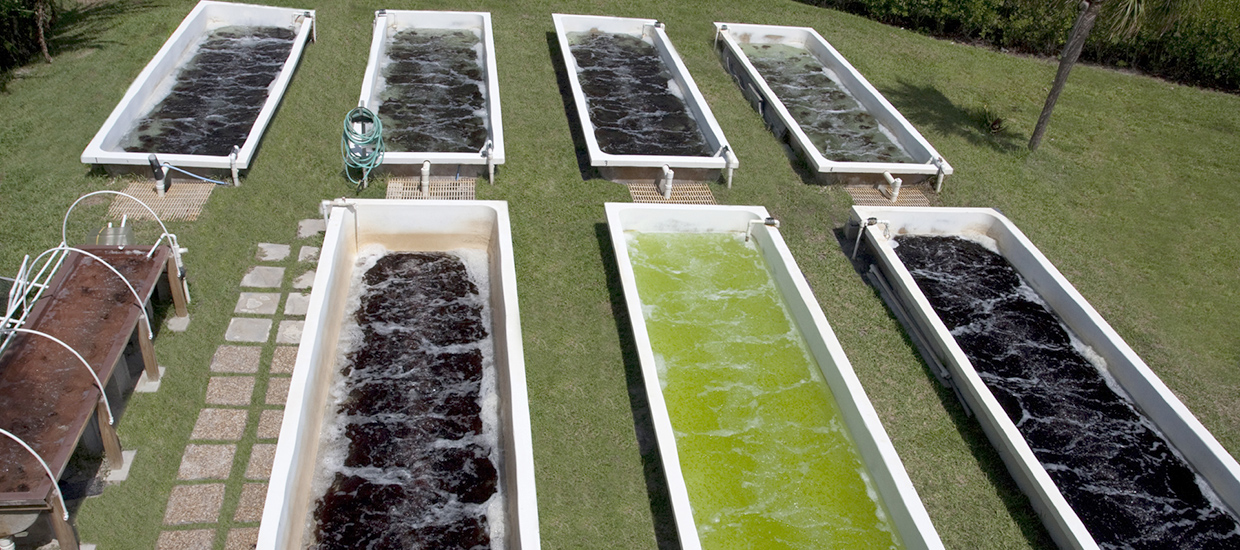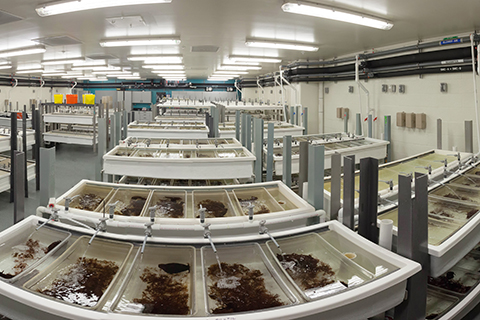The Aplysia Mariculture Laboratory
This state-of-the-art laboratory on Virginia Key, Florida. was designed specifically for culturing Aplysia californica. Since this animal is not indigenous to South Florida and is, in fact, native to a temperate climate, the laboratory has been designed for extensive temperature manipulation and 'fail-safe' operation. In this system ambient seawater is pumped from the ocean adjacent to the RSMAS campus, filtered down to 10 micron particle size and chilled to 15° C.
Cultured animals are produced under a consistent regimen of feeding, temperature, photoperiod and other variables, which supports basic biomedical research by providing investigators with sufficient numbers of experimental animals from all developmental stages and sizes. The facility regularly ships over 10,000 animals per year to researchers around the world.
Rearing Procedures

The Facility cultures animals under standard conditions from egg to adult. Rearing procedures have been optimized (see Capo et al. 2002 for postmetamorphic growout procedures and Capo et al. 2009 for larval rearing procedures) to produce large batches of siblings, so that inter-individual variation is reduced for those researchers needing a consistent genetic background within cohorts.
Fertilized eggs are collected daily from breeding pairs held on the premises. Several thousand animals (siblings) are produced from each collected egg mass. Throughout their growth and development, siblings are tracked with respect to egg mass (parents' identity), as well as hatching and metamorphosis dates, thus ensuring consistent genetic make-up and accurate age classing of each batch of animals shipped.
Collected eggs are incubated under constant conditions in the Larval Culture Lab until hatching. The free-swimming veliger larvae are then kept in sterile seawater with a mixture of unicellular algae, receiving weekly water changes, for about five weeks until they are competent to undergo metamorphosis. Metamorphosis is induced in competent Stage 6 larvae (Kriegstein 1977) by exposing them to the adult food, a red macroalgae. Following metamorphosis, Stage 11 juveniles (1-2mm length) are moved to the Growout Lab where they are kept in chilled, ambient seawater troughs and fed a red seaweed diet. In the Growout Lab, animals may increase in mass 100,000 times (from 2 mg to 200 gm) in about six months. Animals have a maximum lifespan of approximately one year and can reach over 1 kg. in size. Animals of all sizes are shipped each week, including early stage, post-metamorphic juveniles useful in developmental studies and cell culture.

Producing Macroalgae

The successful laboratory culture of Aplysia depends upon consistently providing the appropriate nutritional source for the various stages of the organism's life cycle. For this species, seaweeds play two essential roles: the induction of metamorphosis at the end of the planktonic stage and post-metamorphic nutrition for juveniles and adults.
An outdoor flow-through culture system consisting of seven, 2,400 gallon raceway-style tanks provides space to raise over 300 lbs of macroalgae per week for the Resource. The primary species used at the resource is a South Florida vegetative strain of Agardhiella subulata, (Strain A1). This strain supports metamorphosis and growth in Aplysia, as well as year round biomass production. Species of Gracilaria and Ulva are also raised to provide specialized diets when needed.








